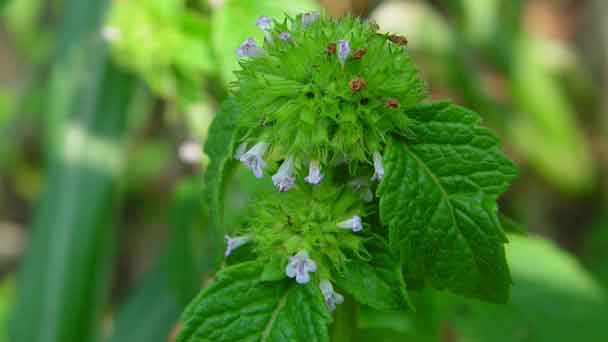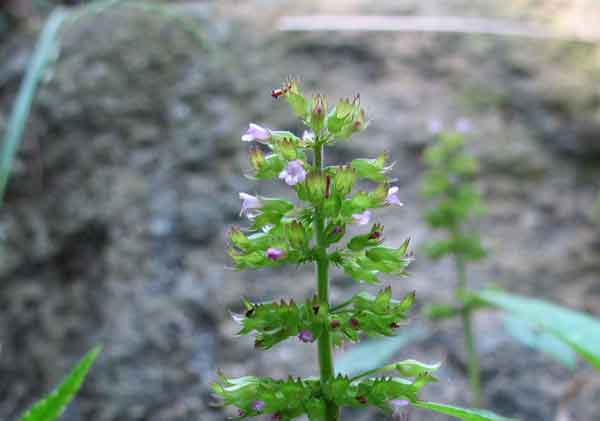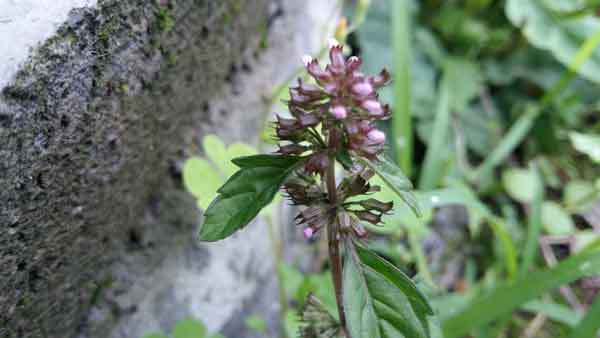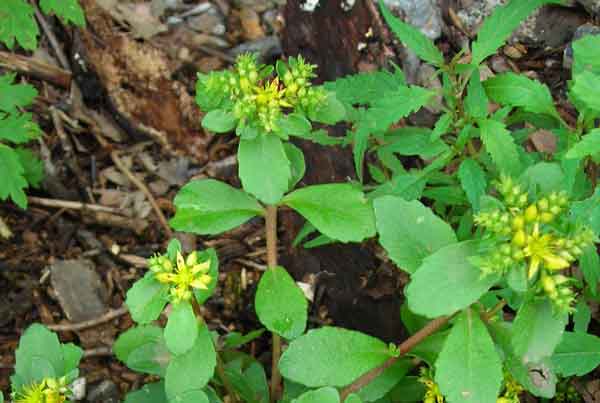Summer Savory: Grow & Care for Satureja hortensis
Written by Iris
Oct 14 2021

Summer Savory (Satureja hortensis) is a small, spicy herb native to the Mediterranean. Summer Savory (Satureja hortensis) is known for its free use in the south of France, in Europe and the Middle East, and is crucial to the Acadian culinary traditions of Canada's Atlantic coast. But to many American gardeners and cooks, this tendency to grow annually is still unknown, or confused with its perennial cousin, Winter Savory. Learn how to grow and care Summer Savory.

Different plants have different water needs. Some plants prefer staying on the dry side, others, like to be consistently moist. Refer to the plant label to check a plant's specific requirements.
Thoroughly soaking the ground up to 8” (20 cm) every few days is better than watering a little bit daily. Deep watering encourages roots to grow further into the ground resulting in a sturdier plant with more drought tolerance.
To check for soil moisture, use your finger or a small trowel to dig in and examine the soil. If the first 2-4” (5-10cm) of soil is dry, it is time to water.
Summer Savory in containers can dry out quickly, depending on the weather, and may need water more frequently than plants in the garden bed. Apply water at the soil level if possible to avoid wetting the foliage. Water the entire soil area until water runs out the base of the pot. This indicates that the soil is thoroughly wet.
Leafhoppers
These little insects are everywhere and it's often a matter of control rather than avoiding them. Try to identify leafhoppers early because they suck the sap from the plants, leaving them yellow and stunted. Use diatomaceous earth or insecticidal soap to kill them off.
Spider Mites
Spider mites live in clusters on the undersides of growing savory leaves. They suck the Summer Savory plant's fluids and can wreak havoc on your garden. Cut any leaves that are infested and throw in the garbage.
Aphids
These little bugs can destroy a Summer Savory plant if you let their population grown. They literally suck the life from your plant. My favorite method to control them is neem oil applied three times with three weeks in between each application. Sometimes it takes a while, so be vigilant and check for aphids throughout the season.
Leaf Roller Caterpillar
Leaf roller caterpillars will roll leaves up and feed on the inner surface. They eat through the leaf as they mature. I use a good organic insecticide and if I see one on a leaf, I pull the it off and throw it in the garbage.
When to Grow Summer Savory (Satureja hortensis)How to Grow Summer Savory (Satureja hortensis)Grow Summer Savory from SeedsGrow Summer Savory from Stem CuttingsHow to Care for Summer Savory (Satureja hortensis)Summer Savory Lighting RequirementsSummer Savory Soil CareSummer Savory WateringSummer Savory Temperature & Humidity CareSummer Savory FertilizerSummer Savory PruningSummer Savory Pests & DiseasesSummer Savory (Satureja hortensis) FAQWhat do you use summer savory for?Is summer savory the same as rosemary?Is summer savory invasive?
When to Grow Summer Savory (Satureja hortensis)
Whether you plant the annual or perennial, plant Summer Savory in spring after the last frost. You can get a head start and plant seeds indoors 6-8 weeks before the last frost. Harden off for a week and then put in the garden when seedlings are 4-6 weeks old.How to Grow Summer Savory (Satureja hortensis)
Grow Summer Savory from Seeds
Summer savory is easy to grow from seed planted directly in the garden or started indoors about 6 weeks before the last anticipated frost. Choose a planting location that receives full sun and has moist, well-drained soil. Savory grows well in containers and raised beds. Light helps seed germinate, so sow seeds shallowly—1/8 inch deep. To ensure a continuous supply of fresh foliage, sow a new crop of savory every 3 to 4 weeks. Summer savory requires regular moisture in summer. If plants are drought-stressed they will quickly bolt and send up seedheads. As soon as plants bolt, Summer Savory are not well-suited for culinary use. Water the plant deeply each week.Grow Summer Savory from Stem Cuttings
Propagate summer savory from soft-wood cuttings in spring and semi-ripe cuttings in late summer/early fall. Using clean secateurs cut stems 4-6 inches in length and remove the lower 2-3 inches of leaves. Prepare small pots with a mix of 50:50 ratio of compost and perlite or horticultural grit to aid drainage. Insert the cuttings evenly spaced around the edge of the pots up to the leaves and firm in to ensure good contact with the compost. Stems can be dipped in rooting hormone if desired but this is not essential. Water the cuttings and keep moist until roots have established. Cuttings may benefit from some bottom heat to stimulate root development. When ready, separate the cuttings and plant one rooted cutting per pot to be planted into the garden in spring.
How to Care for Summer Savory (Satureja hortensis)
Summer Savory Lighting Requirements
Having come originally from the Mediterranean, it shouldn't come as a surprise that summer savory needs bright conditions to thrive. Choosing a position with a lot of direct full sun will be needed. If you are using a container indoors, select a window with southern light.Summer Savory Soil Care
The ideal soil conditions for growing Summer Savory vary between sandy loam (summer) to loam (winter) and range in pH from neutral to slightly alkaline. The soil must also be free draining.Summer Savory Watering
The New Summer Savory plant should be watered daily for a couple of weeks. After that, depending on the weather and soil type, watering may be adjusted to every two or three days. Clay soils hold moisture longer than sandy soils, so expect to water more frequently in sandy settings.Different plants have different water needs. Some plants prefer staying on the dry side, others, like to be consistently moist. Refer to the plant label to check a plant's specific requirements.
Thoroughly soaking the ground up to 8” (20 cm) every few days is better than watering a little bit daily. Deep watering encourages roots to grow further into the ground resulting in a sturdier plant with more drought tolerance.
To check for soil moisture, use your finger or a small trowel to dig in and examine the soil. If the first 2-4” (5-10cm) of soil is dry, it is time to water.
Summer Savory in containers can dry out quickly, depending on the weather, and may need water more frequently than plants in the garden bed. Apply water at the soil level if possible to avoid wetting the foliage. Water the entire soil area until water runs out the base of the pot. This indicates that the soil is thoroughly wet.

Summer Savory Temperature & Humidity Care
To thrive, summer savory benefits from temperatures between 60 to 85 degrees Fahrenheit. When sowing the seeds outdoors, wait until the end of the frost in the springtime. Originally found along the Eastern Mediterranean, summer savory grows best in warmer climates.Summer Savory Fertilizer
Summer Savory planted in the garden don't require additional fertilizer. Apply a 1-2” (3-5cm) layer of mulch or compost. As mulch breaks down it supplies nutrients to the plants and improves the overall soil condition at the same time. Herbs in containers can be fed lightly with a general purpose fertilizer at half the rate suggested on the package directions.Summer Savory Pruning
Regular harvesting will encourage branching and create a nice bushy growing habit. Left unpruned, savory will become leggy and weak. Summer savory should be harvested completely when flowers develop in late summer and early fall.Summer Savory Pests & Diseases
Summer Savory doesn't have many pests and even fewer diseases. I've gone through multiple seasons in a row and had no issues. The secret is to practice good garden hygiene. If any of your plants get infested and you can't save it, pull the plant and throw it in the garbage or burn it. Don't place it in the compost heap.Leafhoppers
These little insects are everywhere and it's often a matter of control rather than avoiding them. Try to identify leafhoppers early because they suck the sap from the plants, leaving them yellow and stunted. Use diatomaceous earth or insecticidal soap to kill them off.
Spider Mites
Spider mites live in clusters on the undersides of growing savory leaves. They suck the Summer Savory plant's fluids and can wreak havoc on your garden. Cut any leaves that are infested and throw in the garbage.
Aphids
These little bugs can destroy a Summer Savory plant if you let their population grown. They literally suck the life from your plant. My favorite method to control them is neem oil applied three times with three weeks in between each application. Sometimes it takes a while, so be vigilant and check for aphids throughout the season.
Leaf Roller Caterpillar
Leaf roller caterpillars will roll leaves up and feed on the inner surface. They eat through the leaf as they mature. I use a good organic insecticide and if I see one on a leaf, I pull the it off and throw it in the garbage.

Summer Savory (Satureja hortensis) FAQ
What do you use summer savory for?
Summer savory is a plant. The Summer Savory leaves and stem are used to make medicine. People take summer savory for cough, stomach pain, gas (flatulence), diarrhea, loss of appetite, and many other conditions, but there is no good scientific evidence to support these uses. In foods, summer savory is used as a culinary spice.Is summer savory the same as rosemary?
Summer Savory is an underused herb that offers the amalgamation of thyme, rosemary, and sage. Summer savory's smooth gray-green narrow leaves have a oregano and thyme-like fragrance and a warming flavour similar to a blend of thyme and marjoram. Summer Savory has woody branches that are similar to the structure of rosemary.Is summer savory invasive?
Both kinds of savories are from the mint family but are not invasive like many other mint herbs.Latest Updated
- Benefits of Bugleweed - 7 Science-backed Health Benefits
- Bugleweed Dangers & Side Effects - Is It Poisonous?
- How to Plant Evergreen Trees - What You Should Know
- When to Plant Evergreens - Grow Guide for Evergreen Trees
- 12 Wonderful Evergreen Shrubs for Your Garden
- 12 Popular Evergreen Plants with Pictures for Beginners
- When And How To Prune A Lilac Bush Like a Pro
- How to Grow & Care for Lilac Vine (Hardenbergia Violacea)
- Japanese Lilac Tree (Syringa Reticulata) Care & Propagation Guide
- Shumard Oak Pros and Cons - What to Know
Popular Articles
- Winter maintenance of Antirrhinum Majus
- How to Grow Terminalia Mantaly Tree
- How to Grow and Care for Crossostephium Chinense
- How to grow Antirrhinum Majus in spring
- Peristeria Elata (Dove Orchid) Profile: Info & Care Guide
- Underwatered Snake Plant (Sansevieria Trifasciata) - Signs And How To Fix
- How to Care for Brazilian Jasmine Plant (Mandevilla Sanderi)
- How to Grow & Care for Graptopetalum Purple Delight in Summer
- Rosa Chinensis (China Rose): Plant Growing & Care Tips
- How to Care for Baby Sun Rose (Aptenia Cordifolia)